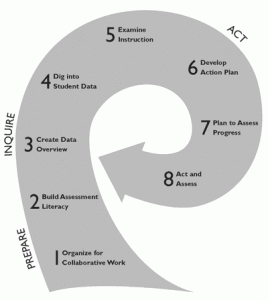Teachers matter more to student achievement than any other aspect of schooling. Many factors contribute to a student’s academic performance, including individual characteristics and family and neighbourhood experiences. But research suggests that, among school-related factors, teachers matter most. When it comes to student performance on reading and math tests, a teacher is estimated to have two to three times the impact of any other school factor, including services, facilities, and even leadership.
Data
A picture may be worth a thousand words, but in education, information speaks volumes. Data analysis can provide a snapshot of what students know, what they should know, and what can be done to meet their academic needs. With appropriate analysis and interpretation of data, educators can make informed decisions that positively affect student outcomes.
http://www.sedl.org/pubs/sedl-letter/v22n02/using-data.html
Presentation by John Hattie: Maximising the dividend of professional learning
